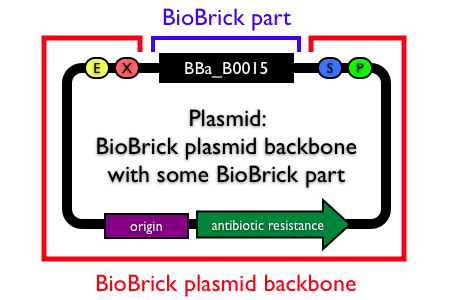|
|
| (28 intermediate revisions not shown) |
| Line 11: |
Line 11: |
| | <DD><a href="https://2011.igem.org/Team:Johns_Hopkins/Project/Violacein">Violacein</a><br/> | | <DD><a href="https://2011.igem.org/Team:Johns_Hopkins/Project/Violacein">Violacein</a><br/> |
| | <DD><a href="https://2011.igem.org/Team:Johns_Hopkins/Project/Vector">Yeast Vector Library</a><br/> | | <DD><a href="https://2011.igem.org/Team:Johns_Hopkins/Project/Vector">Yeast Vector Library</a><br/> |
| - | <DD><a href="https://2011.igem.org/Team:Johns_Hopkins/YT/Results">Results</a><br/></DL> | + | <DD><a href="https://2011.igem.org/Team:Johns_Hopkins/YT/Results">Results</a><br/> |
| | <DD><a href="https://2011.igem.org/Team:Johns_Hopkins/YT/Future">Future Plans</a><br/></DL> | | <DD><a href="https://2011.igem.org/Team:Johns_Hopkins/YT/Future">Future Plans</a><br/></DL> |
| | </div> | | </div> |
| Line 19: |
Line 19: |
| | __NOTOC__ | | __NOTOC__ |
| | ======Yeast Toolkit Background====== | | ======Yeast Toolkit Background====== |
| - | We aimed to add the Violacein pathway to yeast using yeast promoters and UTR's. It will be the first time the violacein pathway will be expressed in a eukaryotic organism. For further details on the violacein purple pigment, please visit the [https://2009.igem.org/Team:Cambridge/Project/VI01 "Violacein Page"] on the Cambridge iGEM 2009 website.
| + | [[File:ConstitutivePromoter.png|right|150px|link=http://partsregistry.org/Image:ConstitutivePromoter.png]] If your iGEM team sets out to do work in E. coli, the Parts Registry provides huge selection of parts and vectors to choose from. But E. coli doesn't make bread. Yeast make bread. If your iGEM team wants to deliver vitamins to malnourished children in a genetically-engineered yeast chassis, there are few resources available to assist you. There is a major gap in the supportive parts - '''expression cassettes, vectors, and reporters''' - for iGEM work in yeast. |
| | + | |
| | + | |
| | + | [[File:Terminator.png|left|link=http://partsregistry.org/Image:Terminator.png]]Many special considerations must be made when working with yeast as opposed to E. coli. Yeast expression cassettes are different. Coding regions in yeast must be nestled between a yeast promoter on one end and a 3' UTR on the other. |
| | + | |
| | + | [[File:BioBrickbackbonevspart.png|200px|right|link=http://partsregistry.org/Image:BioBrickbackbonevspart.png]]Yeast projects also require a versatile set of vectors. Ideally, these would be '''shuttle vectors''' that can be transformed into E. coli for amplification then back to yeast for final deployment. A variety of selectable markers including '''HIS, LEU, URA, and TRP''' would also be desirable. Some applications call for autonomously-replicating '''CEN''' vectors. Others times vectors designed to '''integrate''' their inserts into the genome are needed. Sometimes all you need is a '''2-micron''' vector. |
| | + | |
| | + | |
| | + | Finally, with the vitamin A pathway, we are already on our way to a nice reporter library. Beta-carotene is the bright '''<html><span style="color:orangered">orange</span></html>''' pigment found in carrots. Its precursor, lycopene, is the bright '''<html><span style="color:red">red</span></html>''' pigment found in ketchup. We decided to go for a third reporter as well: violacein, an unmistakable '''<html><span style="color:purple">purple</span></html>''' pigment. ''This will be the first time the violacein pathway will be expressed in a eukaryotic organism''. For further details on the purple pigment violacein, please visit the [https://2009.igem.org/Team:Cambridge/Project/VI01 Violacein Page] on the Cambridge iGEM 2009 website. |
| | + | |
| | + | |
| | | | |
| | <html> | | <html> |
| | </div> | | </div> |
Yeast Toolkit Background
If your iGEM team sets out to do work in E. coli, the Parts Registry provides huge selection of parts and vectors to choose from. But E. coli doesn't make bread. Yeast make bread. If your iGEM team wants to deliver vitamins to malnourished children in a genetically-engineered yeast chassis, there are few resources available to assist you. There is a major gap in the supportive parts -
expression cassettes, vectors, and reporters - for iGEM work in yeast.
Many special considerations must be made when working with yeast as opposed to E. coli. Yeast expression cassettes are different. Coding regions in yeast must be nestled between a yeast promoter on one end and a 3' UTR on the other.
Yeast projects also require a versatile set of vectors. Ideally, these would be
shuttle vectors that can be transformed into E. coli for amplification then back to yeast for final deployment. A variety of selectable markers including
HIS, LEU, URA, and TRP would also be desirable. Some applications call for autonomously-replicating
CEN vectors. Others times vectors designed to
integrate their inserts into the genome are needed. Sometimes all you need is a
2-micron vector.
Finally, with the vitamin A pathway, we are already on our way to a nice reporter library. Beta-carotene is the bright orange pigment found in carrots. Its precursor, lycopene, is the bright red pigment found in ketchup. We decided to go for a third reporter as well: violacein, an unmistakable purple pigment. This will be the first time the violacein pathway will be expressed in a eukaryotic organism. For further details on the purple pigment violacein, please visit the Violacein Page on the Cambridge iGEM 2009 website.
 "
"


